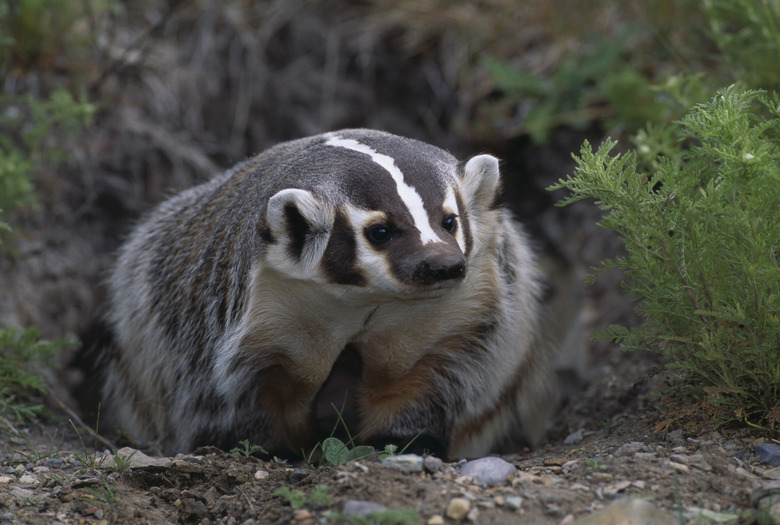How To Get Rid Of A Badger
If you don't like snakes and mice in your yard, seeing an American badger (Taxidea taxus) might be a welcome sight. But their burrowing can quickly offset their rodent controlling benefits, leading you to search for ways to rid them from your yard. The American badger is protected in some states, so before you take steps to get rid of them, check with your state's wildlife agency for approved control measures. If live trapping is approved in your state, call a professional to do the job. A caged badger will protect itself and should only be caught and released by an experienced trapper.
Make Sure It's a Badger
Badgers are a nuisance because of the oval-shaped holes they dig in yards. The burrows are unsightly in a manicured yard and they also pose a tripping hazard. The main reason badgers damage lawns, is because they are looking for food. The American badger weighs 15 to 20 pounds, has a flat, broad head and silver-gray fur. A key identifying characteristic is a white stripe that runs from its nose, over its head and down its back. The length of the stripe down its back varies by subspecies.
Close the Buffet
The American badger prefers to hunt in open areas without trees, making your lawn a prime target. Some of its favorite foods are small mammals like mice, rabbits, ground squirrels and pocket gophers, as well as amphibians such as frogs. You can deter the badger from burrowing in your lawn, and returning after removal, by getting rid of its favorite prey. Though it is difficult to remove all food sources, combining food removal with other badger ridding practices may help. Deter frogs from breeding in your yard by filling in depressions where water stands and storing containers upside down so they don't fill with water. Trap mice to reduce populations, and fence out rabbits and other small mammals. Badgers eat the equivalent of one to three squirrels per day.
Light Up Your Yard
Preferring the protection of darkness, badgers feed at night. If the damage in your yard is only in one part, flood the area with strong lighting throughout the night. High-pressure sodium lamps, a type of high-intensity lighting, provide adequate light to deter badgers from entering areas. When using lighting to frighten away badgers from you yard, be mindful of neighbors. Don't direct lighting so it shines in windows or affects plants that need specific periods of darkness.
Shut Them Out
Badgers dig shallow burrows searching for prey that lives below ground. Install fencing around the perimeter of your yard, or around the problem area. Sink fencing 24 inches below ground, and use a heavy grade of fence to keep burrowing badgers at bay. Above ground, the fence should be tall enough they can't jump over it, and fence holes should be small enough that badgers and their prey cannot squeeze through them.
